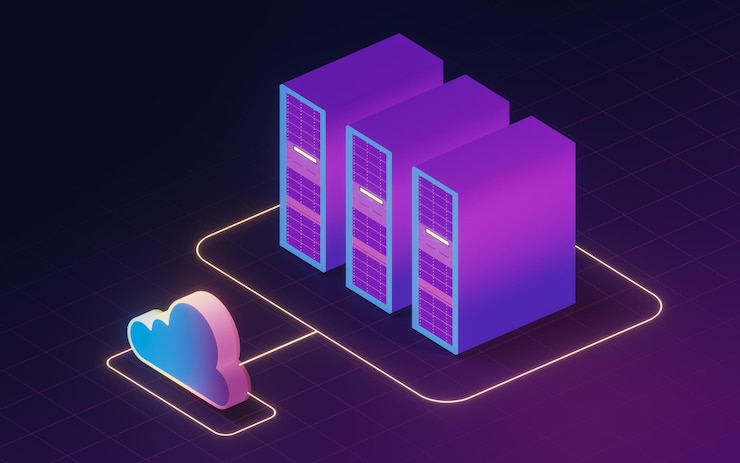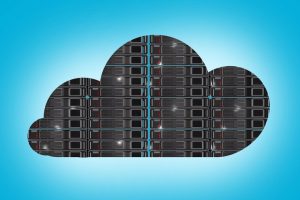How to Choose the Right VPS Configuration for Optimal Website Performance
Choosing the right VPS (Virtual Private Server) configuration is a critical decision for website owners. A poorly configured VPS can lead to slow performance, downtime, and a poor user experience. In this article, we’ll explore how to select the right VPS configuration for your website, ensuring optimal performance and scalability.
Understanding VPS Hosting and Its Importance
A Virtual Private Server (VPS) is a hosting solution that provides a virtualized server environment, giving you dedicated resources within a shared hosting infrastructure. Unlike shared hosting, where multiple websites share the same server resources, a VPS offers isolated resources, such as CPU, RAM, and storage, ensuring better performance and reliability.
The importance of selecting the right VPS configuration cannot be overstated. A VPS that is either under-configured or over-configured can have significant impacts on your website’s performance. An under-configured VPS may result in slow loading times, frequent downtime, and a frustrating user experience. On the other hand, an over-configured VPS can lead to unnecessary expenses, as you pay for resources you don’t need.
To avoid these pitfalls, it’s essential to carefully evaluate your website’s requirements and choose a VPS configuration that aligns with your needs. This involves understanding your website’s traffic, content, and scalability needs, as well as the performance expectations of your users.
Assessing Your Website’s Requirements
Before selecting a VPS configuration, you need to assess your website’s specific requirements. This includes evaluating your website’s traffic, content, and expected growth. Here are some key factors to consider:
1. Website Traffic
Your website’s traffic is one of the most critical factors in determining the right VPS configuration. High traffic websites require more resources to handle the increased load. To estimate your traffic, consider the following:
- Daily Visitors: Estimate the number of visitors your website receives daily. This will help you determine the amount of bandwidth and CPU resources required.
- Pageviews: Calculate the average number of pageviews per visitor. This will give you an idea of how much server resource is needed to serve your content.
- Traffic Peaks: Identify any peak traffic periods, such as during promotional events or holidays. Your VPS should be able to handle these spikes without performance degradation.
2. Content and Media
The type and size of content on your website also play a significant role in determining the right VPS configuration. Websites with heavy media, such as videos, images, and large files, require more storage and bandwidth. Consider the following:
- Storage Requirements: Estimate the amount of storage needed for your website’s content, including databases, images, videos, and other media files.
- Bandwidth: Calculate the bandwidth required to serve your content to visitors. High-resolution images and videos can significantly increase bandwidth usage.
- Content Management System (CMS): If you’re using a CMS like WordPress, Joomla, or Drupal, consider the resource requirements of the CMS and any plugins or themes you use.
3. Scalability Needs
As your website grows, you’ll need to scale your VPS to accommodate increased traffic and content. Consider your long-term growth plans and choose a VPS configuration that allows for easy scalability. This includes:
- Vertical Scaling: The ability to upgrade your VPS by increasing resources such as RAM, CPU, and storage.
- Horizontal Scaling: The ability to add more servers to distribute the load and handle increased traffic.
- Future-Proofing: Choose a VPS provider that offers flexible plans and allows you to upgrade or downgrade as needed.
Choosing the Right VPS Configuration
Once you’ve assessed your website’s requirements, the next step is to choose the right VPS configuration. This involves selecting the appropriate CPU, RAM, storage, and bandwidth for your website. Here’s a detailed guide to help you make the right choice:
1. CPU
The CPU (Central Processing Unit) is the brain of your VPS, responsible for processing requests and executing tasks. The number of CPU cores and their speed determine the processing power of your VPS. Here’s how to choose the right CPU:
- Number of Cores: Websites with high traffic or complex applications may require more CPU cores to handle multiple concurrent requests. For most small to medium-sized websites, 2-4 cores should suffice.
- Clock Speed: The clock speed, measured in GHz, determines how fast the CPU can process instructions. A higher clock speed means faster processing, which is essential for websites with high traffic or resource-intensive applications.
- Burstable CPU: Some VPS providers offer burstable CPU options, which allow your VPS to temporarily exceed its allocated CPU resources during traffic spikes. This can be useful for websites with unpredictable traffic patterns.
2. RAM
RAM (Random Access Memory) is crucial for the performance of your VPS, as it determines how quickly data can be accessed and processed. Websites with high traffic or complex applications require more RAM to ensure smooth performance. Here’s how to choose the right amount of RAM:
- Minimum RAM: For most small to medium-sized websites, 2-4 GB of RAM should be sufficient. Websites with heavy traffic or resource-intensive applications may require 8 GB or more.
- Database-Heavy Websites: If your website relies heavily on databases, such as e-commerce sites or forums, you’ll need more RAM to ensure quick data retrieval and optimal performance.
- Dynamic Content: Websites with dynamic content, such as blogs or news sites, may require more RAM to handle concurrent user requests and cache content efficiently.
3. Storage
Storage is another critical component of your VPS, as it determines how much data your website can store. The type of storage you choose can also impact the performance of your website. Here’s how to choose the right storage configuration:
- SSD vs. HDD: Solid-State Drives (SSDs) offer faster read and write speeds compared to traditional Hard Disk Drives (HDDs). For optimal performance, choose a VPS with SSD storage.
- Storage Capacity: Estimate the storage required for your website’s content, including databases, images, videos, and other media files. Websites with heavy media or a large number of files may require more storage.
- Backup Storage: Consider additional storage for backups, especially if your website contains critical data that needs to be protected. Many VPS providers offer backup solutions, but it’s essential to factor this into your storage needs.
4. Bandwidth
Bandwidth determines how much data can be transferred to and from your VPS. A lack of sufficient bandwidth can lead to slow website loading times and a poor user experience. Here’s how to choose the right bandwidth:
- Monthly Data Transfer: Estimate the amount of data your website transfers monthly. This includes all the data sent to visitors, such as web pages, images, videos, and downloads.
- Peak Traffic: Consider peak traffic periods, such as during promotional events or holidays, when bandwidth usage may be higher. Ensure your VPS can handle these spikes without performance degradation.
- Content Delivery Network (CDN): If your website serves a global audience, consider using a CDN to distribute content closer to your users, reducing bandwidth usage and improving loading times.
Testing and Monitoring Your VPS Performance
Once you’ve selected the right VPS configuration, it’s essential to test and monitor its performance to ensure it meets your website’s requirements. Here are some tips for testing and monitoring your VPS:
1. Performance Testing
Before launching your website on the new VPS, perform performance testing to identify any potential issues. This includes:
- Load Testing: Simulate high traffic to test how your VPS handles increased load. Tools like Apache JMeter or LoadRunner












